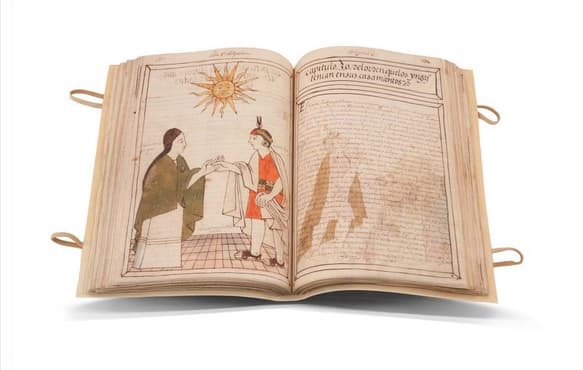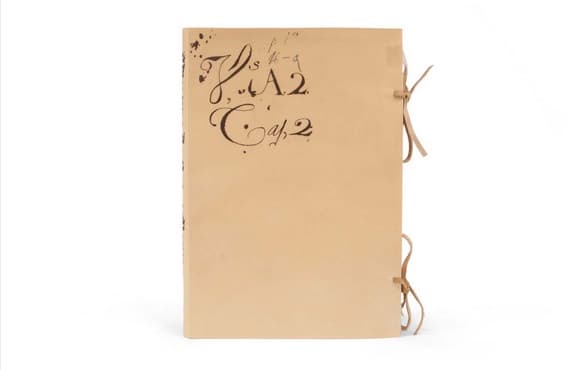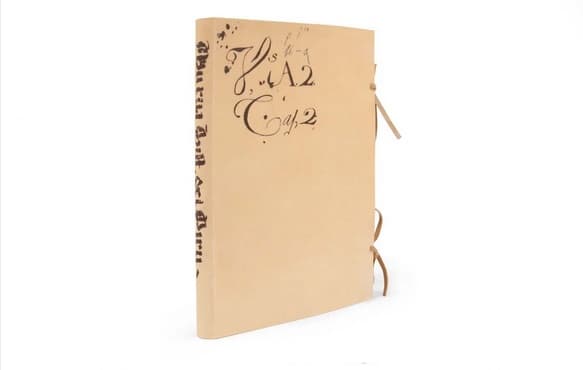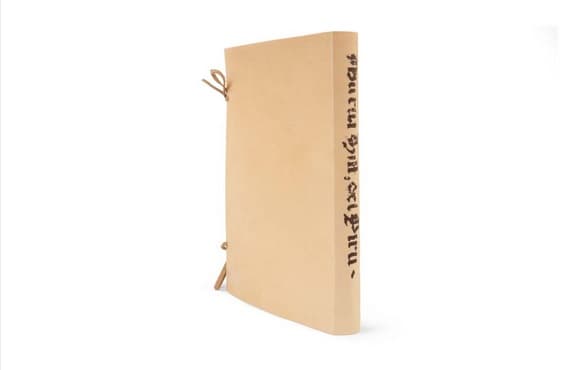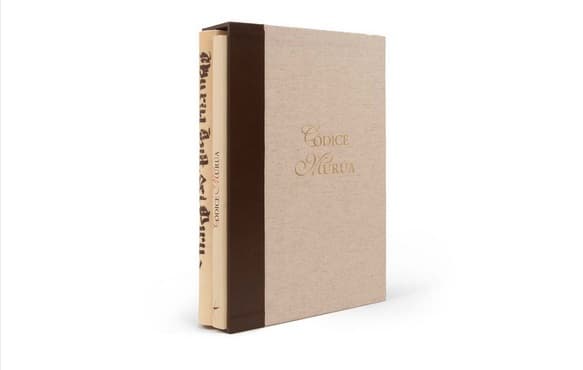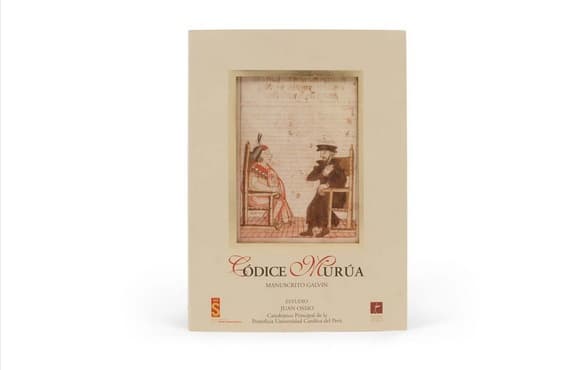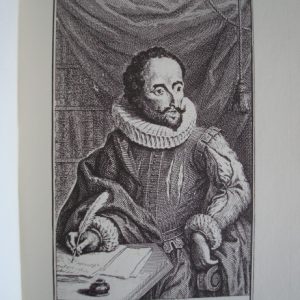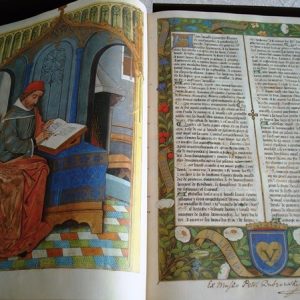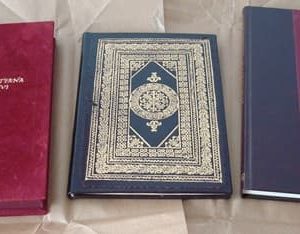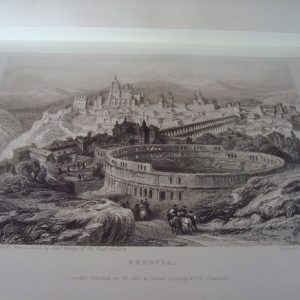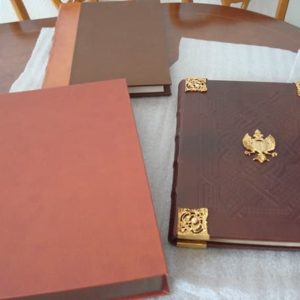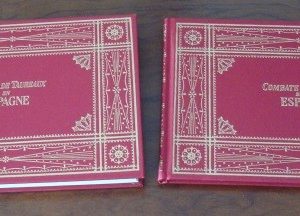Description
Facsimile edition of the Murúa Codex, Galvin Manuscript, from the 16th century (Royal History and Genealogy of the Inca Kings of Peru of their deeds, customs, costumes and manner of Government), produced by the Testimonio publishing house of Madrid in 2004. Limited to 980 copies numbered and certified.
Facsimile bound in natural parchment, sewn on a hand loom, natural leather closures, format 22.2 x 20.8 cm. 302 pages.
Accompanied by the corresponding complementary study book by Juan Ossio, senior professor at the Pontifical Catholic University of Peru. 278 pages.
At the end of the 16th century after the reorganization of the Peruvian viceroyalty by Viceroy Francisco de Toledo, we see a set of chronicles appear that made the pre-Hispanic past and the native populations their central theme. Among them, those by two authors stand out who had the peculiarity of including a large number of illustrations. One of them was indigenous and the other was Spanish, specifically Basque since he claims to belong to the same province where Saint Ignatius of Loyola was from, that is, Guipúzcoa. This resemblance was not coincidental since there is strong evidence that they knew each other. Furthermore, so close were the ties that the indigenous people seem to have been responsible for a high percentage of the drawings found in the priest’s work.
The indigenous man’s name was Felipe Guaman Poma de Ayala and he is the author of “El Primer Nueva Coronica y Buen Gobierno” which consists of about 1,200 pages of which 399 have drawings. The Mercedarian, for his part, was the author of two codices. One is the one that is now being disclosed for the first time and the other is the one that the Spanish historian Manuel Ballesteros Gaibrois discovered at the end of the 1940s and which was baptized as the “Wellington Manuscript” because it had been in the possession of the family of the British Duke. , winner of Napoleon, who was the owner of this surname.
The latter was the definitive version that the priest prepared for publication, leaving the previous one as the draft. Today the “Wellington Manuscript” has already been distributed in two editions while its preliminary version has just seen the light in a facsimile edition that reproduces with extraordinary fidelity the 113 watercolors it contains as well as the presence of different additions that clearly account for the having been prepared in different stages.
The earliest date contained in this document entitled “History and Royal Genealogy of the Inca Kings of Peru of their deeds, customs, costumes, and manner of Government” is 1590 but the additions reveal that texts were incorporated until the beginning of the 17th century. . Added to the late manuscript, this work constitutes an invaluable testimony of the process of construction of a chronicle that in its desire to be published had to overcome the restrictions imposed by the state and the church of its time. Elaborating on the merit that this primordial condition gives it, it must be noted that it is a document very close to the Indian chronicler Guaman Poma de Ayala and in general to the culture of the Andean settlers. This is reflected in the structure given to the document, the presence of a set of traditions that only these two chroniclers mention and the drawings that in about 80% present a style similar to those made by the author of the Nueva Coronica. .
Throughout its 145 pages we see lists similar to those of the Nueva Coronica, and those recited by the ancient readers of the quipus (or knotted ropes for mnemonic use) to the Incas, their wives, figures of nobility, institutions and customs, and some cities. With some exceptions, the tendency is for each chapter of the four books into which this work is divided to be accompanied by a drawing. Some, particularly those that accompany those that deal with the Incas and their wives the Coyas, reflect the presence of a European hand while the following that of one or more indigenous hands.
Although we are dealing with an unpublished work, it should be mentioned that its text was already known thanks to a copy made in 1890, known as the “Loyola Manuscript”, which is preserved in the library of the Jesuit convent located in Azpeitia. This copy reproduced quite faithfully the original manuscript that is now published and which we have named the “Galvin Manuscript” to honor the owner who currently preserves it with great care. However, he was unable to reproduce the 113 watercolors that accompany the text. Something was attempted but only with five of the drawings presenting them as black and white lines. Consequently, the facsimile that Testimonio Compañía Editorial now makes available to the public has, as a great first, presenting for the first time in all its real dimension the 113 watercolors of this codex that the Galvin family carefully preserves in Ireland.
With these drawings, and the notoriety that the additions achieve, the gain of the known text is much more than double since they reveal a series of details that enrich our knowledge of the Inca past and the process of constructing a chronicle. Through the drawings and the accompanying texts we learn the names of the parts of the Inca clothing, we obtain a representation of the space that fell under Inca rule, as well as some of their buildings such as the Temple of the Sun, the Inca palaces, punishments, prisons, couriers or “chasquis”, accountants, bridge keepers, their marriage, the chosen virgins, age classes, sacrifices and other ritual practices, sorcerers, some dancers, and finally some cities, as well as the illustration of a romantic legend that deals with the love of a Virgin of the Sun with a shepherd.
Contrasting this document with the Nueva Coronica by Felipe Guaman Poma de Ayala and the Wellington manuscript, whose original title is “General History of Peru”, its position is to be an intermediate instance between a work that is located in an indigenous aspect and another that is accommodates the specifically European historiographical canons. Consequently, it is a first-rate instrument to understand the acculturation process in the field of historiography and art.
Complete copy and in perfect condition.
Free shipping for this item. Ask us any questions, indicating the article reference.




